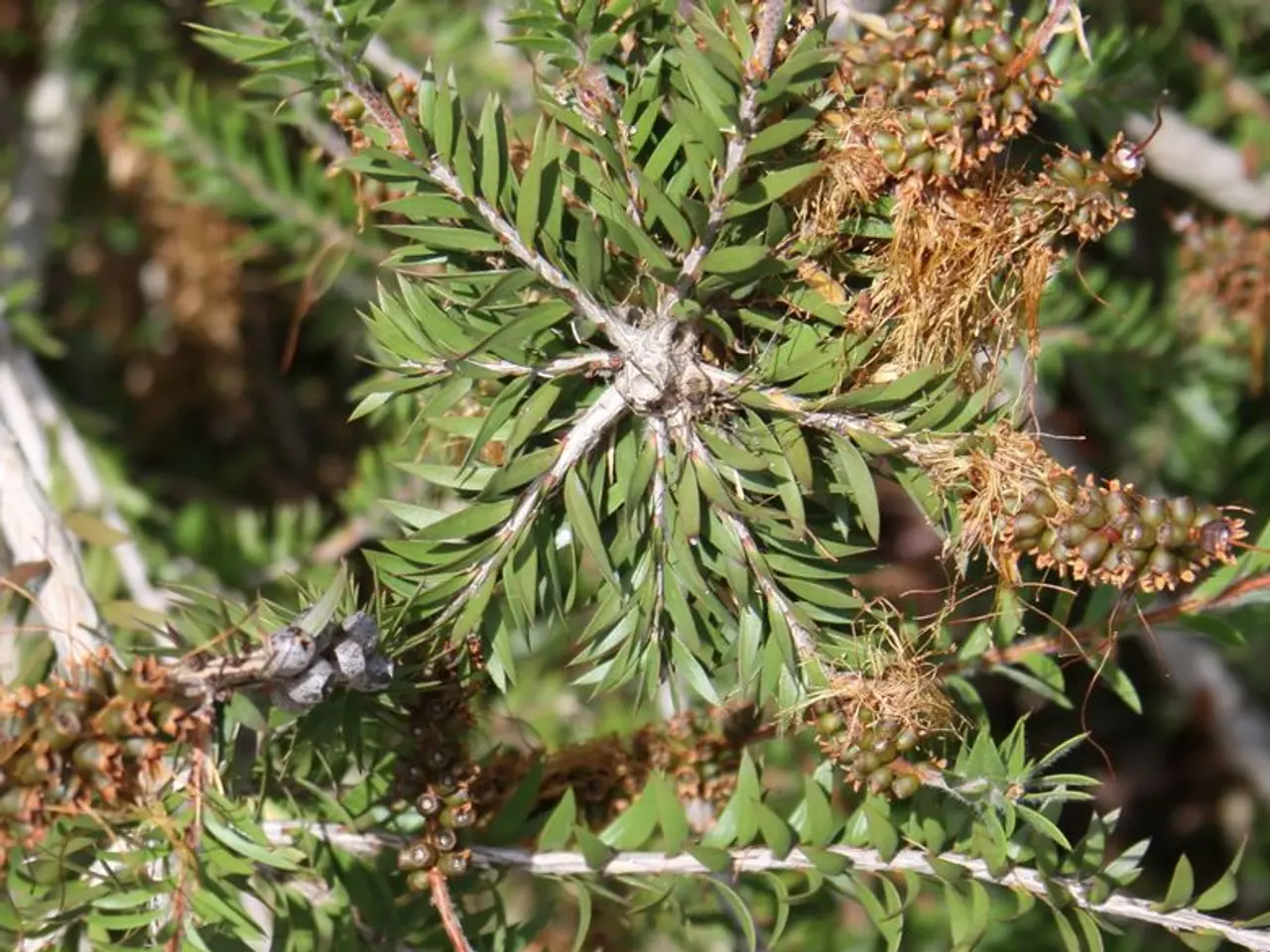Pruning a Lemon Tree Correctly, as Persted by Experts
In the world of citrus cultivation, maintaining a healthy and fruitful lemon tree is essential. Pruning plays a crucial role in this process, ensuring the tree remains healthy, productive, and aesthetically pleasing. Here's a comprehensive guide on pruning your lemon tree.
Lemon trees, which can live for about 50 years, thrive best when pruned at the right time. The ideal pruning season is late winter to early spring, just before new growth begins, after the risk of frost has passed but before the summer heat arrives. Avoid heavy pruning in late summer or fall, as this can stimulate tender new growth vulnerable to cold damage.
To prune a Meyer lemon tree, follow these steps:
- Remove dead, diseased, or damaged branches by cutting back to healthy tissue to maintain tree health.
- Cut off suckers, which are shoots growing from the base or below the graft union; these do not produce fruit and divert energy from productive branches.
- Remove water sprouts, which are vigorous vertical shoots that usually do not bear fruit; trim them back to encourage better fruit production.
- Thin crowded, crossing, or inward-growing branches to open the canopy for better sunlight exposure and airflow, reducing disease risks.
- Remove branches with tips less than 24 inches from the ground to avoid fruit developing fungal infections from contact with soil moisture.
- Lightly trim long, thin, or leggy branches to maintain a balanced, bushy shape, particularly important if grown indoors or in containers.
When pruning, remember these technique tips:
- Use clean, sharp pruning shears or loppers, disinfecting tools with rubbing alcohol between cuts to prevent disease spread.
- Make clean, angled cuts just above a bud or branch junction to ensure good healing and promote healthy growth.
- Avoid removing more than one-third of the tree's canopy at a time to prevent stress.
Citrus wood, including that of lemon trees, is hard and resilient. However, pruning may result in a loss of bloom, but this loss is minimal if the pruning is not drastic. A large fruiting area should be aimed for, with the foliage canopy extending almost to the soil line.
Pruning a lemon tree to expose the trunk or large limbs to the sun should be done in late winter and spring to give the tree time to grow foliage to shade the exposed wood. Evergreen lemon trees do not require severe pruning compared to deciduous fruit trees.
Never remove more than one third of the length of a branch when pruning a lemon tree, to allow it to photosynthesize. Pruning lemon trees late in the season can stimulate growth that may be damaged by frost.
For those growing Meyer lemon trees, wait until they are 3-4 years old before pruning, and remove any shoots below the graft point, any dead or crossing branches, and any suckers or water sprouts. Fruit thinning is not necessary on lemon trees.
Minor pruning of lemon trees can occur at any time of the year, except late in the season. Exposed branches after pruning can be protected from sunburn by painting a 50:50 mix of white interior latex paint and water.
Lemon trees, when old and allowed to grow tall, may require severe pruning, but this is rare as they typically grow between 10-15 feet (3-4.5 m) in height. Pruning a lemon tree should focus on removing dead or crossing branches and sprouts.
In conclusion, pruning your lemon tree is a vital part of maintaining its health, productivity, and shape. Follow the steps and techniques outlined in this guide, and you'll be on your way to a thriving, fruitful lemon tree. Happy pruning!
A well-pruned lemon tree, grown in a home-and-garden setting, can make a significant enhancement to one's lifestyle by providing both aesthetically pleasing foliage and delicious citrus fruits. Maintaining a proper pruning schedule, as detailed in this guide, ensures the longevity and continued fruitfulness of the lemon tree while adhering to gardening best practices.




